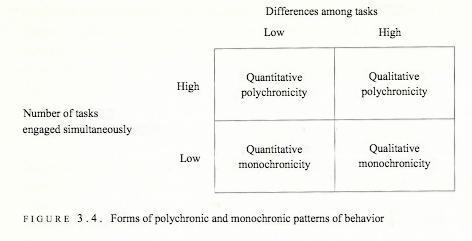User studies and intuition both suggest that the activities that a knowledge worker engages in change—sometimes dramatically—over time. Projects and milestones come and go, and the tools and information resources used within an activity often change over time as well. Furthermore, activities completed in the past and their outcomes often impact activities in the present, and ongoing activities will, in turn, affect activities that will be undertaken in the future. Capturing activity over the course of time has long been a problem for desktop computing.
"Activities are dynamic"
This challenge features temporal relationships between work and worker, in the past/present sense, and work and goals, in the present/future sense.
Evokes Reddy's T/R/H temporal organization of work and Bluedorn's work on polychronicity.
